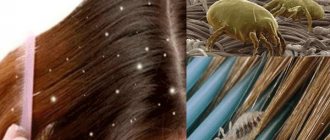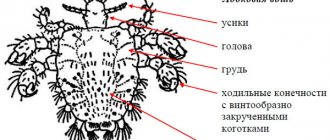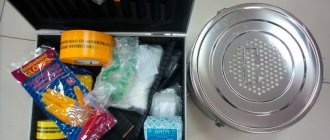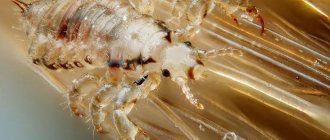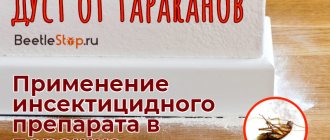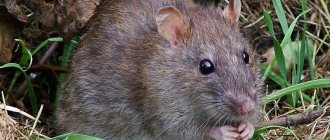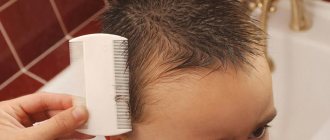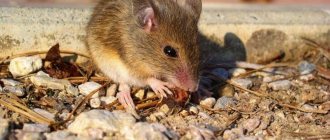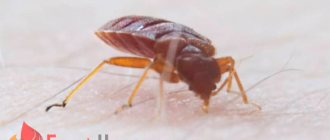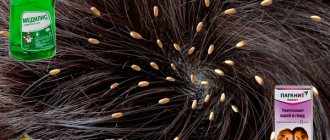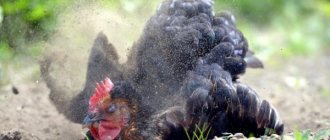What is anti-pediculosis styling?
The head louse is a blood-sucking insect that lays eggs during its life. The cause of lice can be neglect of hygiene rules, as well as contact with someone who is sick with it. After a lice infestation, the first signs of lice do not appear immediately. Only after 2 weeks the patient can feel all the unpleasant consequences of the disease.
To destroy insects in public places, special treatment is carried out, for which special means are used. Anti-pediculosis styling is presented in various variations. It is always issued in the form of a kit and meets all sanitary standards.
PROHIBIT USE COMPLETELY
Ready-to-use pediculicides based on pyrethroids (permethrin, tetramethrin, d-phenothrin):
- pediculicidal product "Pedilin" in the form of shampoo RU.77.99.27.002.E.001414.01.12 dated 01/20/2012 permethrin 1% DV; KRKA, (Slovenia)
- pediculicidal agent “Higia” for the fight against head and pubic lice (in the form of shampoo) RU.77.99.23.002.E.013494.05.11 dated 05/10/2011 permethrin 1% DV; JSC "Medika" (Bulgaria)
- pediculicidal agent “Nittifor-cream” RU.77.99.01.002.E.041440.10.11 dated 10/05/2011 permethrin 1% DV; "Pharmaceutical plant Teva Private Co. Ltd.", (Hungary)
- pediculicidal shampoo “Veda” RU.77.99.01.002.E.039178.09.11 dated 09/22/2011 permethrin 0.4% DV; CJSC Experimental-Production (CJSC DDD), (Russian Federation)
- pediculicidal agent "Veda-2" RU.77.99.01.002.E.000438.01.11 dated 01/19/2011 permethrin 0.5% DV, Experimental-Production CJSC (DDD CJSC), (Russian Federation)
- pediculicidal agent “DIS” RU.77.99.01.002.E.002699.02.11 dated 02/15/2011 permethrin 0.7% DV, tetramethrin 0.5% DV, pyriproxyfen 0.05% DV; CJSC Experimental-Production (CJSC DDD), (Russian Federation)
- pediculicidal agent "Medifox - pediculicidal gel" RU.77.99.55.002.E.032909.08.11 dated 08/17/2011 permethrin 1% DV; LLC NPC "FOX & Co", (Russian Federation)
- pediculicidal agent “Samarovka-lotion” RU.77.99.01.002.E.003320.02.11 dated 02/21/2011 permethrin 0.2% DV; Samarovo LLC, (Russian Federation)
- pediculicidal product “Hygea - pediculicidal shampoo” RU.77.99.01.002.E.001247.02.11 dated 02/01/2011 permethrin 0.9% DV; Samarovo LLC, (Russian Federation)
- pediculicidal agent “Mirrolla permethrin “FORA+” RU.77.99.88.002.E.003250.04.14 dated 04/24/2014 permethrin 1.5% DV; LLC "Mirrolla" (Russian Federation)
- insecticidal agent "Zitol-spray" RU.77.99.27.002.E.050158.12.11 from 07.12.2011 permethrin 0.3% DV JSC "NPF "Ekoprom", (Russian Federation)
- insecticidal soap “VITAR” RU.77.99.01.002.E.040057.09.11 dated 09/27/2011 permethrin 0.5% DV; CJSC, (Russian Federation)
Appendix 5
Signs of lice
The following symptoms are characteristic of pediculosis:
- Itchy scalp.
- Rough spots on the skin that appear after parasite bites.
- Skin pigmentation resulting from hemorrhages in the tissue of the inflammatory process, which is provoked by the saliva of lice.
- Presence of tangles. The phenomenon is quite rare, but occurs when the hair gets tangled and stuck together with purulent-serous insect waste. Scratching can lead to secondary skin diseases such as dermatitis and eczema.
Pediculosis in an advanced form can manifest itself with an increase in temperature and swelling in the area of the lymph nodes.
In what cases is processing carried out?
Pediculosis is usually detected in the emergency department at the sanitary inspection station.
If it is possible to detect adult lice and nits in the hair, an additional examination of personal hygiene items and the patient’s belongings is carried out. The patient is transferred to a closed room and examined on a couch. The procedure for getting rid of lice is carried out in an inpatient department. Disinsection measures include comprehensive measures to destroy parasites in hair, body, and clothing. Pediculosis
Contraindications for treatment may include:
- children under 3 years of age;
- pregnancy, lactation;
- serious condition of the patient;
- a large number of purulent wounds on the skin.
When pediculosis is detected, it is necessary to fill out the appropriate papers in which the patient gives his permission to carry out the procedure. Anti-lice medications are allocated either from the medical fund or purchased at the expense of the patient. The actions of a nurse in case of head lice are limited to preparing and carrying out sanitation, filling out a log in which the data is displayed in table form, and notifying the patient’s relatives.
In cases where lice are detected in children, the health worker reports to the preschool or school institution. According to the new Sanpin on the prevention of lice, an unscheduled inspection is carried out in the class and group, and preventive measures are taken to prevent the spread of lice.
Prevention of head lice
To prevent the appearance of parasites, you need to disinfect the room and change linen regularly. If the infection affects one of the family members, it is important to inspect all other residents of the apartment. If lice are found, you need to immediately begin to fight them. It is necessary to act comprehensively. The chemical method consists of using certain products and agents that include anti-pediculosis styling. Mechanical is based on the use of a comb, through which nits and their eggs will be removed from the hair.
Final stage
Completing the procedure:
- burn the paper over which the combing was carried out;
- remove the patient’s clothes and underwear and place them in an oilcloth bag; carry out the same manipulations with the clothes of the nurse who was involved in the treatment;
- send the bags to a disinfection chamber;
- treat the comb with alcohol;
- treat the premises with an insecticidal preparation.
At the end of the procedure, the nurse must fill out a lice examination log and make a corresponding note in the patient’s outpatient record. A re-inspection is carried out after 7 days, and additional treatment is performed if necessary.
In cases where body lice are detected, hygiene procedures are prescribed, and all the patient’s belongings are subject to heat treatment. It is recommended to sanitize the apartment. After removing the parasites, the medical worker conducts explanatory conversations so that the patient cannot get lice again.
Anti-pediculosis styling: composition
This installation must include:
- A bag or sack for placing the things of a person with lice into it.
- Tray for cut hair.
- Protective oilcloth cut.
- Rubber gloves.
- Scissors.
- Fine-tooth comb.
- Hair clipper.
- Alcohol lamp.
- Head scarf or plastic cap.
- Cotton wool.
- Table vinegar.
- Lice killer.
- Shampoo.
- Chemicals for treating rooms and bed linen.
- Sprayer.
- The robe is disposable.
- Instructions for using styling.
Examination for lice
Medical workers are required to conduct head lice inspections in preschool educational institutions once a month, at school after the holidays, and selectively by class every month. At enterprises, institutions, and organizations, mandatory inspections must also be carried out twice a year.
According to the order of the Ministry of Health, it is mandatory to carry out a preventive examination of patients at the sanitary inspection station when placing a patient for inpatient treatment or in a maternity hospital. The inspection procedure involves the use of a fine-toothed comb, a magnifying glass or a magnifying glass.
Executing the procedure
The patient's hair is processed. For this purpose, anti-pediculosis agents included in the styling are used. After this, a cap is put on the head. After 20 minutes, the curls are washed with shampoo from the set. Dried hair is combed strand by strand with a fine comb. Completion of the procedure involves the following steps:
- The patient's personal belongings are placed in bags for disinfection.
- All instruments used for the procedure (gloves, apron, gown) are placed in a bag.
- The patient's hair is examined again.
- After each inspection, the comb is doused with boiling water or treated with alcohol.
After the disinfection for which the anti-lice treatment was used is completed, the room and objects previously used by a person infected with lice are treated with special preparations.
How is processing carried out?
Sanitation is carried out in a separate room. It should be well ventilated. The nurse's tactics when performing disinfestation are determined by the degree of infection of the patient, and therefore a treatment regimen for the patient is prescribed. Preparatory work involves performing a number of activities:
- cover the couch with oilcloth material and seat or lay the patient on it, having first put a pearl on him and a tourniquet around the hairline;
- explain to the patient the process of the upcoming manipulation;
- The medical worker conducting the procedure must put on an additional gown, gloves, a mask and prepare all the necessary equipment: anti-pediculosis agent, hair scissors, a basin in 2 copies, bags for disposal and subsequent disinfection, a comb, vinegar.
Anti-pediculosis treatment
Treatment algorithm for pediculosis:
- Prepare a solution to kill parasites in accordance with the instructions.
- Consistently treat hair against lice, avoiding contact of the product with mucous membranes and face. Each strand should be processed separately.
- If your hair is long, put it in a bun and cover it with a plastic scarf.
- Maintain exposure according to the drug manufacturer's recommendations.
- After the specified time has passed, rinse off the product with warm water, after removing any remaining product, wash your hair with detergent shampoo and rinse with a vinegar solution.
- After applying the vinegar solution, tie your hair with a plastic scarf and leave it in this state for 15-20 minutes.
- Rinse your hair again with warm water and dry with a towel.
- Place the patient on a chair and place paper on the floor to make it easier to dispose of insects later. Be sure to comb out dead insects and nits using a fine-tooth comb.
- Periodically remove adhering parasites from the comb using a cotton swab soaked in alcohol.
- At the end of the procedure, re-examine the patient and make sure there are no lice and nits.
- If necessary, re-treatment of hair for pediculosis is prescribed.
Pediculosis
Origin of parasitosis and evolution of the pathogen
Pediculosis (pediculosis - from the Latin "lice"; rhtheiriasis - from the Greek "damage", "lice") is a common ectoparasitic disease manifested by itchy skin lesions at the site of lice bites, often accompanied by secondary infection, eczematization and other complications. Lice parasitize exclusively on mammals and are adapted to feed on strictly obligate hosts.
pediculosis has ancient origins. As hosts evolved, parasites also underwent some changes. The disappearance of hair on most of the human body led to the fact that the parasites “specialized” in living in certain areas of the skin with hair - and two types of lice were formed: Pediculus humanus and Phthirius pubis (seu inguinalis). Later, thousands of years later, the species Pediculus humanus was divided into two subspecies - Pediculus capitis and Pediculus vestimenti.
Epidemiology of pediculosis
For many centuries, lice were considered an “integral part” of humans. There were even statements that lice were “a positive factor in the natural selection of their hosts.” However, at the beginning of the twentieth century. The role of lice in the spread of anthroponotic blood (vector-borne) infections - classical and epidemic typhus, relapsing typhus, trench (Volyn) fever - was established. Domestic scientists G.N. Minkh, N.F. Gamaleya [4] proved the transmission of these pathogens by body lice, in the stomach of which rickettsia multiplied after sucking infected blood, excreted in feces and embedded in skin wounds. N.F. Gamaleya (1908) emphasized that typhus is contagious only in the presence of lice.
In Russia, pediculosis and transmissible typhus became a pandemic during the civil war of 1918–1920.
At this time, important research was carried out in Russia on the epidemiological significance of pediculosis and methods of combating it, begun by Academician E. N. Pavlovsky and which found full awareness of the importance of this issue among a wide range of doctors and biologists.
The epidemic spread was eliminated, but pediculosis still remained a pressing problem in a number of countries. This is associated with new epidemiological factors - freedom of sexual behavior, tourism, commercial travel, increased migration of people (M. Orkin, H. Maibach, 1999) [6]. Head lice are more often found in children, schoolchildren, and young people. Body lice is less common - mainly in people living in cramped (poor) conditions, in vagabonds, in elderly people who do not maintain hygiene. Pediculosis pubis is registered mainly in young people, as well as people of non-traditional sexual orientation (often simultaneously with sexually transmitted infections). Infants become infected from their parents through bed or when breastfeeding and the mother has lice near the nipple.
Characteristics of parasites
Lice belong to the family Pediculidae of the order Pseudorhynchota. Head lice and body lice have few anatomical differences: body lice are larger in size and have a uniform gray color, while head lice have sharp pigmentation on the sides. The pubic louse is noticeably different from them with a short and wide body, reminiscent of the contours of a crab (the English synonym for the louse is Crab).
Physiological differences are manifested not only in the specificity of the habitat, but also in the frequency of feeding, the intensity of egg laying, and life expectancy (Table 1). The body louse moves extremely quickly, while the pubic louse moves very slowly. All varieties go through the same development cycle: embryonic development in the egg (nit) is 6–8 days, then the hatched larvae molt 3 times in 3–5 days. All of them feed on blood immediately after emerging from the egg. The optimal temperature for their development is 25–27°C.
Clinical picture
Clinical symptoms of lice include the presence of lice on the skin, clothing, nits on hair and underwear, as well as inflammatory skin lesions caused by lice bites, the action of an anticoagulant, sensitization to saliva, lice antigens, irritation and contamination of the skin with their feces. Experiments by Academician E.N. Pavlovsky and A.K. Stein (1924) [8] showed the appearance in the dermis at the site of bites of limited foci of a dense inflammatory infiltrate of neutrophils and lymphocytes with an admixture of eosinophils, edema, extravasation, and vasodilatation. Itching is a common symptom of the skin's reaction to a lice bite. It may be intolerable (especially for body lice at night) or weak (for lice pubis); sometimes its intensity decreases with a decrease in sensitization or due to a person’s adaptation to a chronic lesion. The rash, which appears a few days after the bites, is initially acute (“pruritic acute dermatitis”) in the form of hyperemic spots, urticarial edematous elements, small bright red urticarial papules, vesicles, then turns into chronic dermatitis with inflammatory papules, excoriations, hemorrhagic crusts, lichenification. Later, complications arise with secondary infection, accompanied by lymphadenopathy, febrile episodes, anemia, and microbial eczematization. With phthiriasis pubis and body lice, specific pigmentary changes in the skin occur, and with severe advanced head lice, a tangle in the form of tangled, sticky hair with a putrid odor occurs. Blue spots in phthiriasis are the result of skin staining with the products of hemoglobin destruction by the saliva of the phthisis. Clinical differences between types of lice are characterized by different localization, additional signs and different complications, although lice (including lice) can spread further than their typical habitats; Some people have all three types of lice.
table 2
Diagnostics
Detection of lice or live nits is necessary for an accurate diagnosis. You can use the fluorescence method under a Wood's lamp (which is used by all dermatologists when recognizing trichomycosis and other dermatoses). Living nits fluoresce in a bluish color, while dead nits do not glow and, upon direct inspection, appear gray and dull. The differential diagnosis takes into account possible similarities with pediculosis, pediculous eczema and other complications of pediculosis; also with skin itching, diabetic itching, senile itching, seborrheic eczema, microbial eczema, atopic dermatitis, strophulus (so-called prurigo), senile prurigo, urticaria, Vidal's lichen (limited neurodermatitis), toxicerma, lymphogranulomatosis, primary pyoderma (streptoderma , streptostaphyloderma, staphyloderma), blepharitis and conjunctivitis not associated with phthiriasis, melasma of endocrine or toxic origin, fading syphilitic roseola.
Diagnostics includes mandatory examination of contact persons.
Treatment
Treatment methods for head lice have evolved in accordance with the formation of hypotheses about its causes. Not only in the Middle Ages, but even at the end of the 19th century. pediculosis was considered by doctors within the framework of the humoral doctrine.
Modern insecticides that act as neurotoxic poisons on lice include: 1) organophosphorus compounds (malathion); 2) aromatic hydrocarbons (crotamiton, benzyl benzoate); 3) halogenated hydrocarbons (lindane); 4) improved pyrethrins and synthetic pyrethroids (permethrin, A-Par, etc.). Each country selects a preferred drug from this list. In the USA, Lindane is considered the cheapest, and permethrin is considered safe and effective. In Russia, the drugs prescribed by doctors and available in pharmacies are mainly synthetic pyrethroids, permethrin in the drugs “Nittifor”, “Medifox”, etc. (“Clinical recommendations”, 2007). Benzyl benzoate is less often recommended (if pyrethroids are contraindicated), and old remedies (with kerosene for head lice, “Simple sulfur ointment” for smooth skin lesions, mercury ointment for the treatment of phthiriasis) are now not used due to the inconvenience of their use and irritation.
Pyrethroids are esters of chrysanthemum acids and various cyclic alcohols with minimal toxic and irritant effects. They can cause allergic dermatitis in rare cases of cross-hypersensitivity to plants of the chrysanthemum genus.
Nittifor is effective and easy to use (50 mg of permethrin in 10 ml of a solution of distilled water and ethyl alcohol). The hair is generously moistened with the solution, rubbing it in with a cotton swab: 10–60 ml is required per person (then the head is covered with a scarf, the product is washed off after 40 minutes, the hair is combed and dead lice are removed). The solution should not come into contact with the eyes or mucous membranes. After treating the head, wash your hands thoroughly and rinse your mouth. To remove nits, the hair is treated with a 3% solution of acetic acid, then combed out with a fine comb after 1 hour. After a week, the patient is examined - if lice are found, the treatment is repeated.
The drug "Medifox" also contains permethrin in a 5% or 20% solution (Medifox-super). Add 30 ml of water to an ampoule with 2 ml of a 5% solution, apply the resulting emulsion to moistened hair, and rinse off after 20 minutes.
The aerosol preparation “Para Plus” contains 0.58 g of permethrin, 0.29 g of malathion, 2.32 g of piperonyl butoxide per 116 g of composition. Organophosphate malathion complements the insecticidal effect by acting on insects at the level of motor nerves, forming a covalent bond with cholinesterase. Piperonyl butoxide blocks the protective enzymes of lice, which allows you to reduce the concentration of the insecticide without reducing its effectiveness. Piperonyl butoxide is also included in the aerosol preparation “A-Par”. Aerosol preparations are contraindicated in bronchial asthma.
The “Pair Plus” aerosol is sprayed once onto the scalp or pubic area, after 10 minutes it is washed off and the parasites are combed out. The drug is not prescribed for children under 2.5 years of age; It is also contraindicated during pregnancy and breastfeeding.
The drug "A-Par" (esdepaletrin with peritonyl butoxide) is used for disinfestation of clothing and bedding that cannot be soaked or boiled. The room and furniture are wiped with Medifox-super (10 ml of concentrate and 990 ml of water) or sprayed with A-Par. Linen can be soaked in the Medifox-super solution (for 40 minutes); after rinsing, keep in a solution of soda ash (1 tablespoon per 1 liter of water) for 24 hours, then wash. Clothes can be irrigated with Medifox through a sprayer.
For the treatment of pyogenic complications, antimicrobial ointments are recommended; for lymphadenitis, Trimethoprim/Sulfamethoxazole or doxycycline orally is recommended.
Prevention
For the purpose of personal prevention, regular changes of linen and clothes, frequent washing of the head and body are necessary; Other people's bedding should be avoided. You must consult a doctor in a timely manner. Public events include inspections in some groups - kindergartens, schools, student dormitories, as well as disinfestation of premises, monitoring the correctness and results of treatment, and promoting sanitary knowledge. When a case of lice is detected, examination and treatment of persons who have been in contact with a lice patient (in the family, school, kindergarten) is necessary.
Literature
- Zhdanov V. M. Evolution of human infectious diseases. M.: Medicine, 1964.
- Pavlovsky E. N. Parasitological motifs in fiction and folk wisdom. Publication of the Leningrad Parasitological Society. L., 1940.
- Guide to the study of skin diseases by professors Gebra and Kaposi / trans. with German, ed. prof. A. Polotebnova. St. Petersburg, 1883.
- Zdrodovsky P.F. Typhus. BME. 1963. T. 31. P. 939.
- Fitzpatrick T. et al. Dermatology, atlas-reference book / trans. from English, ed. E. R. Timofeeva. M.: Praktika, 1999. P. 944.
- Orkin M., Maibach H. Scabies and pediculosis In: Fitzpatic's dermatology in general medicine. V.2. 5th ed/ed IN Freedberg. 1999. TheMcGraw-Hill, p. 2677.
- Hebra F. Noch ein Wort uber die sogenannte Phthiriasis. Wiener med. Wochenschr., 1866; 425.
- E. N., Stein A. K. Experimental studies on lice // Arch. wedge. and expert Med., 1924. No. 9–12. pp. 114–123.
- Clinical recommendations. Dermatovenereology / ed. A. A. Kubanova. M.: DEX-Press, 2007. pp. 122–124.
- Altmaier P. Therapeutic reference book on dermatology and allergology. M.: GEOTAR-MED, 2003. P. 740.
K. N. Suvorova, Doctor of Medical Sciences, Professor RMAPO, Moscow
Algorithm of actions
Algorithm of actions for pediculosis
Hair styling for pediculosis begins with preparatory procedures. The room should be well ventilated. A bandage from a scarf is tied on the patient's head along the hairline to prevent the product from getting on the skin or in the eyes.
Put on a gown and rubber gloves, prepare the solution according to the instructions. Put an oilcloth on the patient. The hair is distributed into strands.
- Treat hair with anti-lice medication.
- Long hair should be styled in a bun.
- A special plastic cap is put on top.
- Leave for the time specified in the instructions.
- Wash off with plenty of water and use shampoo.
- Dilute the vinegar, rinse your hair, put on the cap again, and leave for 15 minutes.
- Rinse again.
- Dry with a towel.
- Comb out dead lice and nits. It is advisable to use a special comb for these purposes.
- Check hair after styling.
A re-examination is carried out after a week. After 14 days, it is recommended to repeat the procedure to consolidate the result. Linen is subject to thermal and chemical treatment.
